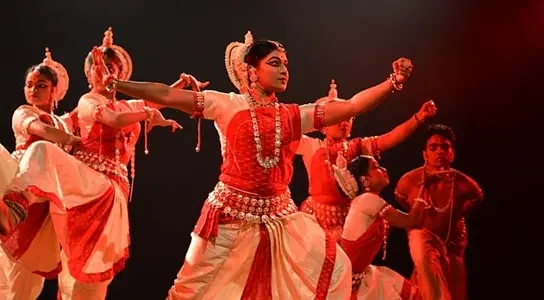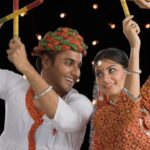Carrying the treasure of rich culture and religious practices, Odisha stands tall from the rest of the country. When it comes to the dance forms of Odisha, the state offers many surprises to the dance lovers with a wide variety. The historical and religious narratives of the state are imbued with the dance moves, subjects and forms. Here we will be making a short closer look to these dance forms and what they represent.
The Odisha Routes for the dances
The state’s traditional Odissi dances come from its rich history and culture. Odissi is one of India’s oldest classical dance forms, going back two millennia. It has evolved with regional culture, religion, and royal support.
Odia Dance Important Elements
The elegant, expressive art of Odissi dance captivates spectators and listeners in many ways. Some Odissi dance traits:
Hand gestures
Odissi mudras are intricate hand gestures. These mudras convey numerous moods and allow the dancer to tell stories.
Face Expressions
Bhavas, facial emotions, are famous in Odissi dance. Dancers use eyes, eyebrows, and lips to convey emotions and stories.
Costumes, Jewelry
Traditional dancers wear bright silk sarees with intricate designs. Accessories include sirapatta headpieces, kankana armlets, and ghungroo anklets.
Styles of Odissi Dance
Odissi dance style and traditions have evolved over decades. Each style adds to Odissi dance’s complexity with its own traits and stories. This article will explain the origins and characteristics of numerous prominent Odissi dance genres.
Mahari Style

This is one of the oldest and most spiritual Odissi dance genres. Young women serving Odisha temple deities in the Devadasi system take part in this dance. Temple dancers are called “Mahari” for their devotion to their deities. Mahari style is intensely religious to Odisha’s supreme god, Jagannath. Mahari dancers show their deep spiritual connection with the divine via graceful movements, sensitive emotions, and poetic storytelling.
Nartaki Style:
The Nartaki style, unlike the Mahari style, evolved in Odisha during Maratha rule. Nattakis, female dancers, performed in royal courts, public spaces, and temples. Odissi dance shifted drastically from temple to court. Nartaki Odissi gets more difficult. This tradition’s performers express more and employ forceful footwork. Nartaki style is elegant and deep, combining dedication and entertainment.
Gotipua Style:
In Odia, “Gotipua” means “single boy” and refers to Odissi dance when young men wear feminine attire. Gotipua preserved and popularized Odissi despite society banning women from performing. Gotipua dancers learn Odissi’s complex techniques and attitudes early. Their acrobatics provide excitement to the dance. Gotipua art is part of Odissi culture.
Modern Odissi:
Odissi has changed. Modern choreographers and dancers work to modernize Odissi. Current Odissi uses mudras, intricate footwork, and expressive storytelling with current themes and tales. Odissi’s timeless beauty and versatility have kept it relevant on national and international venues.
Conclusion
All these varieties and specialties make the dance forms of Odisha all the more special. Offering complex narratives and boundless emotions, these dance forms present perfection as a whole.
Santosh Kumar, He is a SEO + Blogger have 12 years of experience in writing tutorial, informative and product reviews topics.
Page Contents

